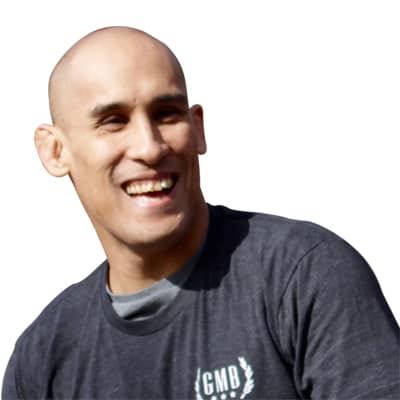Back pain doesn’t have to be your “new normal”.
It might feel like it, though. Especially if you’ve been dealing with it for a long time, trying all the usual routes; medications, creams, heat, ice, braces, a few stretches and maybe even some core work.
Your doctors say your scans are “normal”, or that there’s “deterioration”, but whether it’s one or the other it doesn’t matter, because you’re still hurting.
So you start adjusting and move less, trying to avoid the stuff that sets it off. Or just bracing for it until you feel so stiff you can barely move even when you want to.
But here’s what we know and what we’ve seen and heard from our clients:
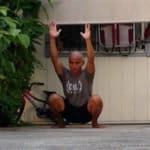
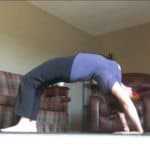
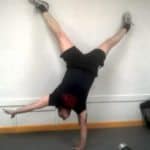
Back pain can change, especially when you shift your focus away from trying to fix the pain itself, and toward moving your whole body with more intention, more connection, and more control.
We’ve helped thousands of people get out of that cycle (not with miracle stretches or quick fixes) but by helping them build the kind of strength, mobility, and coordination that makes their nervous system feel safe again.
Not perfect or pain free forever. But strong, capable, and no longer stuck.
👉 Eager to get started? Skip to my exercise recommendations
Why Most Back Pain Solutions Don’t Deliver
It may be surprising, but with all the specialized products and treatments out there, there’s nothing that has been proven to reduce or prevent back pain better than:
1. Letting time pass.
2. Moving your body.
And that movement? It doesn’t have to be complicated or completely specialized. In fact, full-body movement at an appropriate intensity and range works just as well as specific back-focused drills.
🔑 Key Point: It’s the consistency of well-paced, progressive movement and how it helps retrain your nervous system.
What matters most isn’t the exact stretch or method; it’s the consistency of successful exposure to movement, the gradual increase in load, and the opportunity for your nervous system to re-learn that those movements are safe.
This is the foundation of what we teach. And it’s why we hear from so many clients who find their back pain reduced (or gone entirely) not because they chased the pain, but because they started moving in ways their body could trust again.

Most of these people aren’t dealing with acute injuries. They’re navigating that familiar, frustrating low-grade discomfort that lingers in the background and flares up when life gets busy.
If that sounds like you, you’re not alone and you can get out of it.
When Back Stretches Don’t Fix Back Pain (and why some make it worse)
Now let’s bust some myths!
Forcing yourself to stand in a certain way for the sake of “better posture” or because someone said you are “supposed” to, very rarely works to help your back pain.
Especially when it is so uncomfortable and you don’t feel any sense of ease after a couple of minutes or a few repetitions.
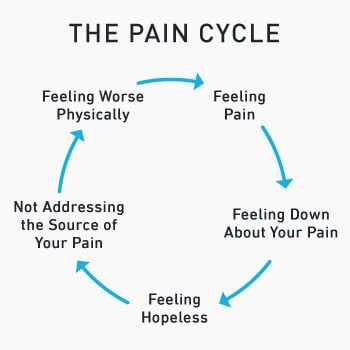 This is because when you’re forcing yourself into “corrective” positions—especially ones your nervous system associates with pain—you might be fueling the problem, not fixing it.
This is because when you’re forcing yourself into “corrective” positions—especially ones your nervous system associates with pain—you might be fueling the problem, not fixing it.
Pain is your nervous system saying, “That feels like a threat.”
It doesn’t always mean damage. But it always means something’s off.
Understanding the Pain Cycle
Pain is complex, but here’s what matters most:
- Pain is a response to a perceived threat.
- It can exist without tissue damage – And still be very real.
- Your body can retain memories of past injuries and be more sensitive to similar stresses.
- To get out of pain, you need to change what your system perceives—not just what your muscles are doing.
- You get better not just by reducing load—but by gradually increasing your capacity to handle it.
Just to be clear, this doesn’t mean you should stop moving altogether. In fact, avoiding movement completely often makes things worse. But it does mean you need to change the kind of input your system is getting.
Gradually introducing movements that are mildly challenging, but not painful, helps recalibrate your nervous system’s response. That’s how you introduce new information. That’s what tells your body: This isn’t a threat anymore!
For example, most people notice they feel worse in one direction and better in another. That’s called positional intolerance and it’s common.
- Extension intolerance means backbending, standing, walking may aggravate symptoms.
- Flexion intolerance shows up more with sitting, driving, bending forward
You don’t need to avoid those movements entirely. But when you know which ones are harder for you, you can adjust how much time you spend in them, and how you ease into them.
Even just having that awareness can be a game-changer! This better sense of control over your symptoms makes a big difference. It shifts you out of the pain loop and into a more confident and capable pattern.
What to Avoid (Especially If Your Back is Already Sensitive)
Movement is essential. But passive stretching and traction-based techniques can sometimes backfire, especially if your body’s already in protection mode.
If you’ve ever come off an inversion table or a hanging bar and felt worse… that’s your nervous system stepping in to defend itself.
Same with aggressive assisted stretching. When someone pushes you deeper into a position, your system may not feel in control, and that alone can spike a reaction.
When in doubt,
Move in ways where you feel supported and secure
Mobility Exercises for Back Pain: Full Body First Then The Details
Here’s what we focus on first: Full Body Movement
It’s natural to think you may need a hyper-specific “special exercise”, but the first thing that’s needed is to “get the big rocks in” before you fill in with pebbles and sand.
- 🧠 Get your whole system working together – integrate movement instead of isolating body parts
- 🧍 Practice everyday patterns – crawling, shifting, squatting, and reaching
- 💪 Build confidence in motion – reduce the fear of flare-ups through repetition
Then you fill in with the sand of more specific movements where you can adjust the load and strain on your spine as you move. Oftentimes, focusing in too directly on the painful area is too stressful and it’s difficult to adjust the appropriate amount of movement/load/force because it all simply hurts too much.
This leads to frustration and then giving up.
Start Broad, then Zoom In
Get some global big movement in first. Because when your whole body learns to coordinate better, your spine doesn’t have to do the job alone anymore.
It’s easier to modify and find what you can do with much less pain. Get your wins in there and then zooming in as needed will be less stressful.
Here’s why:
- The novel stimulus of locomotion can change the guarding behavior.
- Better coordination and motor control can reduce the energy needed to do a movement.
- Better force/load/stress distribution when learning how to use your whole body vs thinking of it as parts and pieces.
Start Here: Exercises That Rebuild Confidence and Capability
🪨 Basic locomotions and whole body exercises are the big rocks.
Practicing and improving how you do with these will take you most of the way in not just decreasing your back pain but also with preparing your body for all the things you want to do.
Then you can do more focused locomotions and joint-specific movements. These are the “pebbles and sand” that can reduce the last bit of nagging symptoms and help you move better in whatever you love doing.
These crawling movements have helped thousands of our clients with chronic or recurring back pain.
1. Bear & Monkey
These quadrupedal exercises provide a lot of great and unique stimulus to your body. You’ll notice with your hands on the ground either moving together or alternating, there’s a distinct stimulation of your core and your spine.
This novel full body motion provides a different sensory and movement experience that helps our nervous system to break out of the pain cycle. You have to give your body something new for it to change!
2. Twisting Bear & Spiderman
As you get more familiar and comfortable with the basic locomotions, you’ll practice other variations which emphasize different actions.
The twisting bear incorporates more spinal rotations and using your arms and legs to support your whole body stability while you do them.
The spiderman locomotion adds in more upper body strengthening to further improve your ability to add load in different spinal positions like sidebending and rotation.
3. Walking Frogger
The Walking Frogger works on hip strength to support your low back as it moves through different positions, such as the rounded pelvic tilt. This gives you more tolerance and adaptability for all kinds of activities.
4. Monkey 360
The rotations and hand positioning in the Monkey 360 stimulate the core and spine with different forces as you move through a circle. Again for more tolerance and resilience in all directions.
How our Clients Consistently Beat Back Pain: No Special Back Exercises—Just Better Movement, System-Wide
As you can see, none of these exercises I’m recommending attempt to stretch or isolate the back.
They coordinate the whole body together in movement – the way a healthy body moves naturally in the real world – so you can systematically build your body’s ability to function correctly in daily activities.
And it’s worked for a TON of our clients:


You can read loads more like these here 👉 Elements Reviews
This isn’t hype. It’s what happens when you give your nervous system enough new, non-threatening input to stop overprotecting.
And it works even if you’ve been stiff or sore for years.
Can You Do This? A Quick Self-Check Before You Begin
So the real question comes down to “will this help me?” Try this quick assessment video.
If this feels okay, you’re ready to explore the full-body movement that makes everything else easier.
If you can do that without too much discomfort, you’re likely fine to use these exercises.
Over time, you should notice easier movement and less tightness and fewer aches. Many of of our clients tell us that they see results in a little as 2-3 weeks.
Resources for Acute Back Pain vs Chronic Pain
If you have acute, very irritable and reactive pain, please see your health care provider.
Especially if you have:
- Pain that just keeps getting worse: read this article instead
- Pain that consistently wakes you up at night
- Weakness, numbness, pins and needles sensations
- Trauma (falls, car accidents): read this article instead
This article is aimed to those of us that have less sensitive back pain issues.
What’s Really Behind That Recurring Back Pain
 Now let’s talk about why the pain might still be there—even when nothing seems “wrong.” Pain can absolutely come from trauma or damage; car accidents, falls, sudden strain. For most people, that kind of pain settles down significantly within a couple of months.
Now let’s talk about why the pain might still be there—even when nothing seems “wrong.” Pain can absolutely come from trauma or damage; car accidents, falls, sudden strain. For most people, that kind of pain settles down significantly within a couple of months.
But in about 30% of cases, the pain lingers (or keeps coming back) even after the tissues have healed. That’s where things get more complex.
In these cases it’s not ongoing damage. It’s a nervous system that’s become more sensitized. Sensations that should be harmless now feel amplified and exaggerated, and interpreted as a potential threat.
Imagine a microphone with the gain turned all the way up. Now every little bit of input gets blasted through the speakers. That’s what your nervous system is doing with movement and sensation. It’s not broken, it’s just amped up and it needs you to turn that dial down.
You do that not by avoiding movement, but by gradually introducing new input. Movement that’s varied, low-threat, and well-controlled. That’s what starts to change the system’s sensitivity.
So our job is to gently show it something new.
It’s not so much that you have to avoid movements and postures forever. Instead think of them as areas where you have to slowly convince your nervous system that they are okay to do again. Prolonged standing, sitting, lifting, carrying; these aren’t bad things.
But if your system is underprepared for them, they can trigger that familiar cycle:
Aggravation, Recovery, Repeat.
And if you’re doing the same things (or avoiding the same things), the nervous system has no reason to believe anything has changed.
Another important piece? Control and strength in the extremities. When you aren’t stable enough there, your body often compensates by overbracing the back muscles. That’s where chronic tension tends to take hold, a stiffness that is “just there all the time”.
To break that pattern, focus on improving coordination, timing, and confidence in your movements, not just strength or flexibility. This can be the missing link in a lot of exercise programs.
Of course, strength and mobility still matter. But if you’ve been training hard and still feel stuck, don’t overlook this.
Ready to Make a Real Change?
You can absolutely start with the moves above.
But if you want a complete, step-by-step plan that’s flexible, sustainable, and proven? Start with our Elements program.
You’ll get:
✅ Gentle, progressive sessions you can do at home
✅ Real-world strength, mobility, and motor control
✅ Movements that build trust—not fear—in your body
Train for a Back that Supports You
Elements builds the coordination and control your back needs to stop doing everything alone. Movements are progressive, scalable, and adjustable to meet you where you are.
There is also a “Gradual Track” with shorter sessions andgentler transitions so your body can rebuild confidence without getting overwhelmed.


